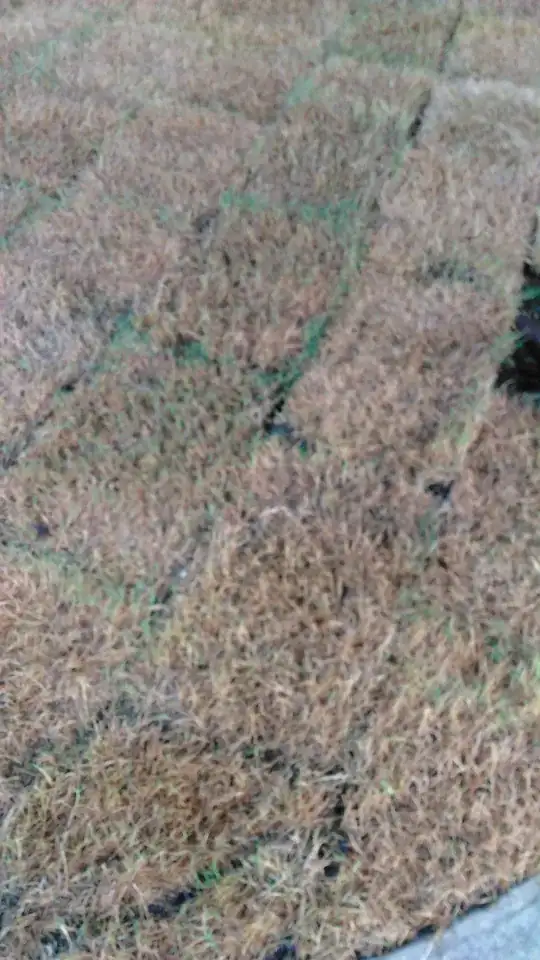Well, on the positive side, bermudagrass is a perennial and celebration is frequently used in dry and hard wearing areas like golf courses.
The sod is transported from farm to customer on palettes on a flat bed open truck frequently with no cover. As the truck is moving, air moves over the bulk sod and desiccates the mass, but much more so the top and sides of the palette bulk. Ideally the sod will be covered by tarps, or be moved in showery weather so any drying is countered by natural irrigation which leaves the top and sides of the sod mass in the same condition as when it was cut. But things get busy at the farm and they want to get the product out the door so sod often travels exposed to hot dry conditions, frequently for long distances.
Likely however the contractor orders enough to discard this layer, and when the delivery arrives the first job is to pull off and set aside the stuff that has dried out and lay the inside good green material first, saving the dry toasty stuff for less visible areas. The toasty layer has been in a sense sacrificed to protect the really good stuff that will please the end customer.
So you helped out the contractor by making use of his discard pile. He is saved the trouble of loading it back up and removing from the site and disposing of it. Knowledge of the situation would help you negotiate a substantial discount on any consideration in your contract, that is, you get it cheap. If not, you did him a favour and he is now obligated, which could come in useful in the future. You have photos, remind him at the appropriate occasion.
Back to the first point. The grass is substantially a perennial mix and hard wearing and known for resistance to drought. You have noted white shoots and there are flecks of green, particularly around the edges of the sod pieces; this indicates you have been irrigating and the water has flowed quickly between the sod pieces. It will look quite a mess for a while but if you can suffer the slings and arrows of your situation and "keep the water to it," shortly the area will patchily fill in and you will forget the decision and remember the learning experience. Hang in there, water in long dry spells, the landscape repairs itself.

